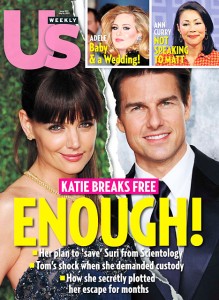Why is YouTube’s most subscribed creator, Ray William Johnson, planning to separate from the largest online-video studios (OVC definition)? In perhaps the most interesting online-video news of 2012, the YouTube personality announced this week that he would be splitting from Maker Studios. See news stories by Variety, The Wrap, LA Biz, and NewMediaRockstars.
Johnson started creating his “=3” show from his NYC apartment in May 2008, and has more YouTube subscribers than Justin Bieber and Katie Perry combined. The 31-year-old Oklahoma City native created and owns YouTube’s most-subscribed channel with nearly 6 million subscribers and has videos seen more than 2 billion times (source). Maker is one of the largest independent OVCs — initially surpassed only by Machinima — until September ComScore data placed it as #3 after Vevo and Warner.
Here are some “factual highlights”of the separation, followed by my “informed speculation” about what caused the split.
- “In the near future =3 will no longer be part of the Maker Studios network, so I’m going to film here for a while,” Johnson said in his most recent video.
- Maker’s only response: “Ray is still a part of the Maker Network. With the recent decline in viewership on ‘=3’ it made sense for him to go back to producing the show himself.” Maker claims that it provided a full production staff of 12 people including a team of writers, and that was “no longer a viable option” for the show.
- YouTuber Michael Buckley called the “decline” statement, “a little bitchy” and I agree (why mention the decline?).
- See NewMediaRockstars’ Tweets for more information as founder Benny Luo says he’s soon interviewing Maker founder “Danny Diamond.”
- In fairness to Maker, the decline is accurate. See NewMediaRockstars/Channel Meter’s report on the slowing rate of views and subscribers of the #1 YouTuber. This drop is consistent with the overall decline of independent creators — as YouTube (and OVCs) have turned their attention to professional content.
- Writes Variety, Williams is “embroiled in a public dispute with the company where he is under contract… a source suggested that Johnson represented a dwindling portion of Maker’s traffic, currently totaling no more than 2%.
- The break, writes Wrap, “is jarring because it presents itself as the most artist-friendly YouTube-driven production company, founded by popular YouTubers like Lisa Nova (Lisa Donovan) and KassemG (Gharaibeh). That being said, YouTubers like the Fine Bros. and Shane Dawson have also left the company in the past.”
So What Caused The Split?
 Here’s where I’ll speculate, since the terms of the agreement (and looming split) are obviously confidential. Ultimately the agreement served neither Johnson nor Maker, and that’s likely why other top creators (who had a following prior to Maker) have pulled away from networks.
Here’s where I’ll speculate, since the terms of the agreement (and looming split) are obviously confidential. Ultimately the agreement served neither Johnson nor Maker, and that’s likely why other top creators (who had a following prior to Maker) have pulled away from networks.
- Maker approached RWJ about two years ago, and the contract did not appear to require Johnson to give up a percentage of his YouTube revenue. To reinforce that point, consider RWJ’s “tweet” to journalist Benny Luo of New Media Rockstars: said Johnson, “Maker suddenly insisted on owning part of =3 IP (his show’s intellectual property). He continued, “When I told them no, they stopped production of the YFM album. He’s referring to Your Favorite Martian channel, a channel that likely was jointly owned and monetized by RWJ and Maker. That channel will likely die or fatigue like Maker’s “The Station.”
- Years ago Maker was new, and needed the numbers and credibility of a top YouTuber to impress investors, advertisers, and creators. It’s common that a YouTube star with a proven fan base to be courted by OVCs without imposing a revenue split on existing channels. But with new creators or jointly developed channels, the creator and OVC often split YouTube ad revenue 50/50%. This is one of few ways that an OVC stays financially solvent today. That will change as OVCs begin to create their own content, receive content-development investments from YouTube, or work “upstream” content distribution deals beyond YouTube.
- Even though we know that all independent creators have seen decline in views/audiences, this surely created tension by Maker and Johnson. Each party likely attributed the decline to the other, when in truth the decline is mostly due to YouTube’s changes in emphasis… with pro content on board, YouTube is less reliant on the independent creators… and wants to become web television (as I’ve written before).
- Maker likely financed RWJ’s show (the “12 staffers”) to improve the show, increase views and keep Johnson happy. Johnson’s channel earns him more than $1,000,000 dollars annually. He can afford to support a staff, but Maker wasn’t getting a piece of that action. That’s not very sustainable.
- Eventually Johnson, accustomed to sole control, probably felt like his show was over managed… did he really need Maker?
- Meanwhile Maker had a declining need for RWJ as it attracted dollars and grew to thousands of Partners. As stated above, RWJ became a smaller and smaller portion of Maker’s total and ongoing views. So Maker probably fatigued of investing in the show, and sought to monetize RWJ in new ways. They’d perhaps co-create additional content (channels or show) that the two could jointly own. (When Next New Networks approached me years ago, that was the deal. I didn’t have to give up a percent of my YouTube Adsense money, but I agreed that new opportunities (like sponsored videos) would be a 50/50% split. Of course Next New was acquired before that ever happened).
- Bottom line: the relationship lost its foundation. Maker didn’t need RWJ so it probably reduced its coddling of the star. Meanwhile Ray realized that he wasn’t necessarily thriving under Maker… did his show really need a fancy set and a collection of writers and famous guests? Did he need Maker to keep and grow his audience?
- The split, by the way, is not unique to this medium. There’s a long history of the entertainment industry that involves financial disputes and friction based on ownership — both financial and creative.
So there we go. Thoughts? Speculation? Feelings? Bring ’em, folks.


Why Ray William Johnson and Maker are splitting – bad news for Maker I think. http://t.co/ImvhmX7B
Fascinating analysis or Maker/Ray William Johnson breakup http://t.co/KSQUGhPQ
Hi Kevin
Ah the troubled history of Maker Studios. First they trick Shane Dawson and Philip Defranco to be co-founders and drive their huge audiences over, only to them screw them over and force them to leave the company, yet make it seem like they did it all themselves and never even mention them. Now they tricked Ray William Johnson to join by giving him whatever he wants in order to get 1000s of aspiring partners to sign up hoping to be the next top star on YouTube just like Ray, and they push him out too taking back everything they promised because they don’t need him anymore now that everyone has joined them. Way to go Maker. Way to go.
I’m sorry but this is inaccurate. Maker studios of COURSE receives a revenue split, how else would they be able to sustain production? They’re a company after all.
Johnson’s contract is not up until April 2012.
Maker approached him asking him to restructure since the show was supposedly losing money.
Johnson agreed.
Maker gave him a horrible contract that demanded 50% IP, 40% revenue split after cost, IN EXCHANGE FOR NOTHING.
When Johnson declined, Maker suddenly halted the YFM Album.
Without any provocation, Maker then halted production on =3, demanding his staff “not to contact him”. Essentially, they were going to let Tuesday roll by with no episode.
Maker studios is run by Danny Zappin, who is known to be a hot head (when the three other founders Shane Dawson, Fine bros, etc. left in a heated dispute with the CEO). Zappin was strongarming Johnson in an irrational display of alleged power, which Johnson refused to tolerate.
After all, why would you want to be in business with a company that’s going to become angry and halt production on everything? Not exactly the smartest of business moves.
Also, the supposed decline in viewership occurred when Johnson WAS NOT ON THE SHOW. If you recall, for the past 6 weeks he was working on the album. If a star leaves his own show, obviously there’s going to be a fall. But all of the episodes with Johnson in them hit their mark of 1 mil views per day until it caps off at around 4.
April 2013****
Why Are Ray William Johnson and Maker Studio Separating? http://t.co/Sm7kfXw0
Sounds like a fairly sound analysis of the situation.
What is this Mary speaks of that Shane Dawson and Philip Defranco were forced out? I recall DeFranco hinting there was bad blood but Dawson made it sound like he decided it just wasn’t his style.
fascinating.
Why Are Ray William Johnson and Maker Studio Separating? | Will Video for Food http://t.co/FY7e0zzp
Actually he doesn’t make $1,000,000 a year. That was a misconception made by some reporters a while back. Ray had addressed this in one of his videos. They probably just made an estimate from the YouTube partner program.
Actually he does!!!
The one important point of this video for most of us I think is that views for independent creators has declined. I know this has been talked about a lot already, but man, it is sad for us, good for big corporations though. I don’t normally hate big companies, but I’m sick of seeing the same old stuff. If I wanted that crap, I would just watch TV.
200 billion views? You guys mean 2 billion right?
typo: raywayjay =2 billion views not 200 billion
Why Are Ray William Johnson and Maker Studio Separating? http://t.co/lzNP3cpB
@chhristine http://t.co/2s4VFARa basically this. Now all these big name YouTube people are taking sides.